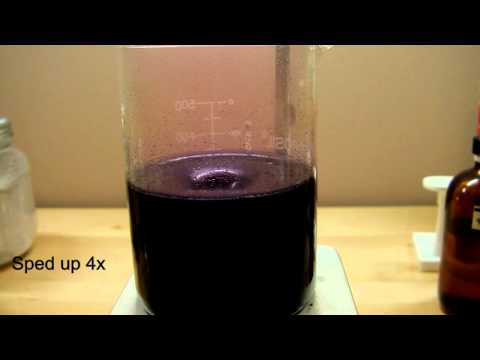I recently stumbled upon this absolutely dazzling chemistry experiment, and I just had to share it. What you will see is a pretty rare reaction in chemistry – an oscillation reaction. Three clear solutions are combined, and the color gradually changes to amber. Suddenly, the whole thing goes dark blue! Then it stays blue, reverts to amber, and the whole cycle repeats again! Don’t believe me? Just take a look.
The chemical mechanism of this reaction is really complex, but the essentials rely on two different processes:
- A (“non-radical process”): The slow consumption of free iodine by the malonic acid substrate in the presence of iodate. This process involves the intermediate production of iodide ion
- B (“radical process”): A fast auto-catalytic process involving manganese and free radical intermediates, which converts hydrogen peroxide and iodate to free iodine and oxygen. This process also can consume iodide up to a limiting rate.
(via Wikipedia)
But here’s the catch: process B occurs only at low quantities of iodine, so this creates a loop. At first, the iodine quantity is quite low so the B process occurs, generating lots of iodine which accumulates. Meanwhile, process A becomes stronger and stronger, creating iodide from the generated iodine. At a certain point, this process overwhelms B, and the production of free iodine is stopped, but the substance is still consumed by A. After a while, the concentration becomes low enough for process B to happen again, and then the cycle repeats again. The color change you see is a result of the two processes.
Was this helpful?




